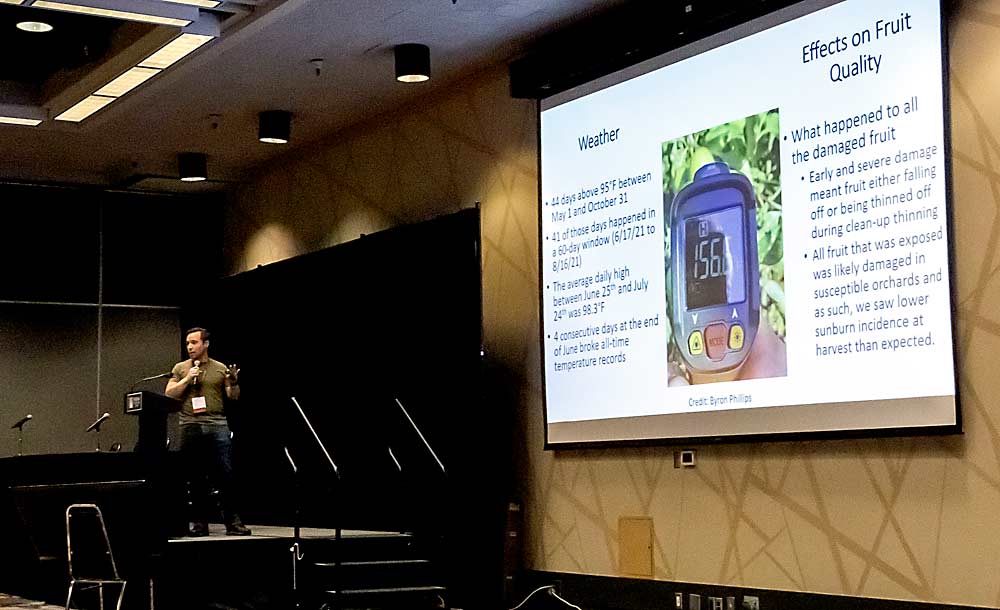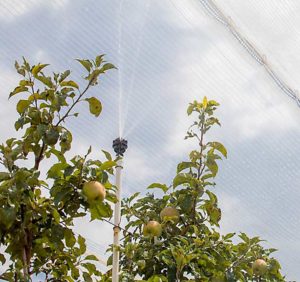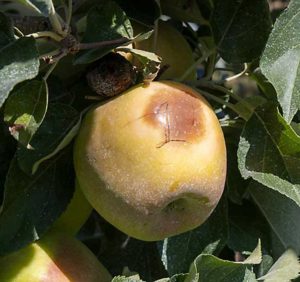
Netting, evaporative cooling and fogging all help mitigate heat stress.
But when temperatures reach the levels they did in the summer of 2021, none of those tools alone offers enough protection. Growers need multiple methods to protect their fruit, Lee Kalcsits of Washington State University told growers at the Washington State Tree Fruit Association Annual Meeting in December.
“What we’re seeing is that under these types of conditions that we saw this year, multiple strategies are the best,” said Kalcsits, the endowed chair for tree fruit environmental physiology and management.
The early summer heat wave in the Pacific Northwest, dubbed a “heat dome” by meteorologists, brought record-setting temperatures of 114, 115 or 118 degrees Fahrenheit relatively early in summer, depending on location. Temperature on the surfaces of poorly protected fruit, however, reached 156 degrees at times.
Kalcsits walked conference attendees through the 2021 experience — one many growers would likely prefer to forget — to convey some lessons about how to react if forecasts call for another extreme episode someday. And most likely, they will, as warmer springs and erratic weather become more common with climate change, he said.
“What we felt this year, what we felt during July, will be the new normal in 60 years,” he said.
Here are a few of his lessons:
—Ground cover makes a difference. Orchards with grassy drive rows stayed 10 to 15 degrees cooler than orchards with bare rows.
—Netting reduces exposure to sun radiation, not temperature. When the thermometer reaches 114 or 115, like it did in late June, symptoms of sunburn will happen with or without netting. “Netting alone, this summer, during that period, was not sufficient to limit sunburn,” Kalcsits said.
—Evaporative cooling works better in cycles. The super-high temperatures tempted growers to leave overhead cooling on constantly: That only hydrocools. To get the benefit of evaporative cooling, cycle the sprinklers on and off to let some of the water actually evaporate. To avoid heat damage, however, be sure to turn the emitters on again before the fruit dries all the way. You may have to cycle more frequently, but you should continue to cycle even in extreme heat.
—Fogging works to cool fruit without adding water to the ground, which prevents skewing irrigation and nutrient management plans. But fogging alone was not enough last year.
—Sun protective sprays, such as kaolin clay, work like netting. They reduce radiation but not temperature. They aren’t enough when the air is as hot as it was in 2021.
—If forecasts call for another extreme heat wave, consider building up water in the soil in spite of deficit irrigation goals. During the period from May 1 through Oct. 31 of 2021, the region experienced 42 inches of evapotranspiration, compared to the usual 36, but received half the usual precipitation.
—Consider vigor trade-offs. Conventional horticultural goals call for limiting vegetative growth in favor of fruit production and ample sun exposure for color, but orchards with more vigorous trees and more leaf area fared better in 2021. More leaf area provides more cooling and shade.
—Extreme heat will stunt fruit growth no matter how much you water.
The heat wave of 2021 brought up further questions, Kalcsits said. For example, how did it affect bitter pit incidence, and what about bud damage for future years? The industry does not yet have answers for those questions, he said, but growers may have to rethink goals and risks in the wake of the heat wave. “How does this summer define risk management?” he said.
—by Ross Courtney








Leave A Comment